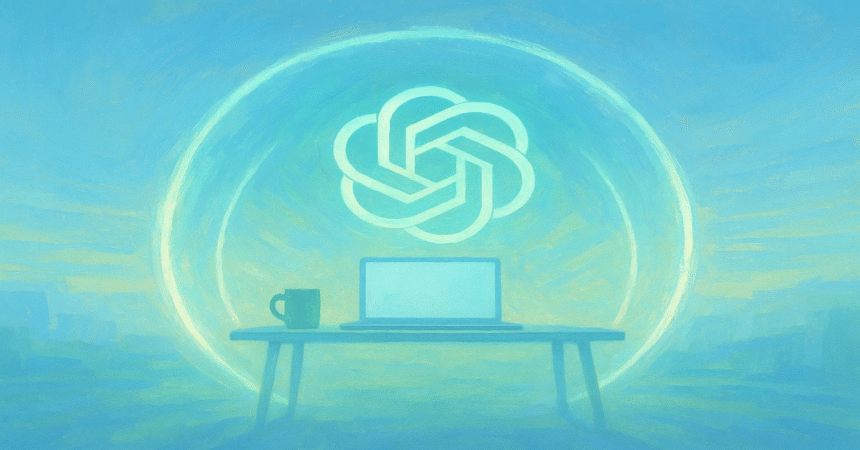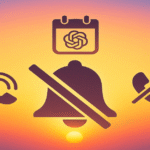When Chaos Stopped Being a Strategy
ChatGPT wasn’t supposed to become his daily planner. The solo founder, juggling product development and marketing, already had software tools stacked across the cloud – Notion, Trello, half a dozen calendars. Yet his mornings started the same way: Slack, inbox, endless scroll. By the time he looked at sales tasks, the day was gone.
One morning, he tested a GPT-based routine generator, and something unexpected happened. For the first time, sales calls, outreach, and follow-ups happened before distractions pulled him under. By lunch, revenue work was already done.
The Founder Who Always Worked Backwards
He was building a SaaS product solo.
Developer by training, marketer by necessity.
The problem wasn’t effort. He worked 12-hour days. The problem was sequence.
- He checked email first.
- He cleaned up bug tickets.
- He tinkered with product copy.
By the time he reached sales, it was 6 p.m. – and prospects weren’t picking up.
He admitted it felt like running in place. That’s when he typed into ChatGPT:
“Rewrite my daily routine so sales happens first. Protect mornings from distractions.”
ChatGPT Flipped His Day
The reply wasn’t a motivational quote. It was a structured plan:
- 8:00–10:00: outreach and sales follow-ups only
- 10:15–12:00: high-focus tasks (coding, new features)
- 1:00–3:00: content creation and marketing
- 3:30–5:00: customer support and admin
- Evening: bug fixes, low-stakes tasks
The key wasn’t just the schedule – it was the guardrails. ChatGPT labeled distractions (“email, Slack”) and moved them out of mornings entirely.
The First Week of Testing
He followed the plan, even when it felt unnatural.
Day 1: 7 cold emails before 9 a.m. – two replies by noon.
Day 3: one early sales call landed a demo.
Day 5: his first paying user from morning outreach.
The founder realized something brutal: his old schedule wasn’t productive, it was protective. He avoided sales until it was too late. ChatGPT forced him to face it first.
How GPT Made Sales Feel Lighter
The model didn’t just shuffle hours. It also rewrote his prompts into systems.
Every morning, he ran:
“List today’s top 3 revenue-generating actions. Format them as a 2-hour sprint.”
ChatGPT’s output cut the fluff. Instead of “work on marketing,” it gave:
- Email 5 leads from yesterday’s webinar
- Send follow-up proposal to Alex P.
- Schedule LinkedIn post for 2 p.m.
He said it felt like a cheat code. No more wondering where to start.
Chatronix: The Workspace That Locked It In
The cockpit that blended all his models
Running ChatGPT alone gave him structure. But he still leaned on Claude for better client emails, Gemini for competitor scans, and Perplexity AI for quick validation. Tabs multiplied again.
He finally moved to Explore Chatronix’s AI features.
Inside, his workflow became airtight:
- Six models in one chat: GPT-5, ChatGPT, Claude, Gemini, Grok, Perplexity AI
- 10 free queries to refine his sales sprint templates
- Turbo mode with One Perfect Answer, merging outputs into one polished plan
- Prompt stacks so his “morning sales sprint” was one click away
- Side-by-side comparisons showing which model’s outreach copy worked best
| Task | Old Routine | With Chatronix |
| Sales planning | 1 hr in Notion | 10 min in Turbo |
| Outreach copy | 3 drafts per email | Claude rewrite in 2 min |
| Research leads | Manual Google dive | Gemini summary |
| Daily plan | Sticky notes | Saved prompt stack |
He said it felt less like using AI, more like piloting a cockpit.
Bonus Prompt That Paid for Itself
The line that still runs in his Chatronix Turbo every morning:
“Write today’s sales sprint. Include top 3 actions, draft outreach templates, and one client follow-up email. Keep all under 2 hours.”
Instead of six different model outputs, Chatronix fused them into one ready-to-send sales kit.
By week three, he’d closed two new clients – both from prompts run before 10 a.m.
ChatGPT Prompting Cheat-Sheet (Beginner to Master)
Bookmark for this later… pic.twitter.com/JVDQ32jx8V
— Zumer (@zumercreator) July 19, 2025What Changed Beyond Sales
The founder’s week looked different.
- 10 hours saved weekly from distractions
- 3 new clients signed in the first month
- Coding energy intact by afternoons
- Evenings without guilt
But the invisible shift was bigger: mornings weren’t reactive anymore. They were offensive.
He stopped “catching up” and started building forward.
Why This Story Matters
Every solo founder knows the trap: working hard without moving sales.
ChatGPT showed the founder it wasn’t about adding hours, it was about rearranging them. Chatronix made the system repeatable. Together, they proved that revenue doesn’t require hustle – it requires order.
Final Thought
He didn’t quit coding. He didn’t hire sales staff. He just stopped putting sales last.
ChatGPT rewrote his routine. Chatronix made it stick.
And once sales happened before distractions, the company stopped being a side project – it became a business.
Because sometimes the fix isn’t working harder. It’s just flipping the order of the day.















